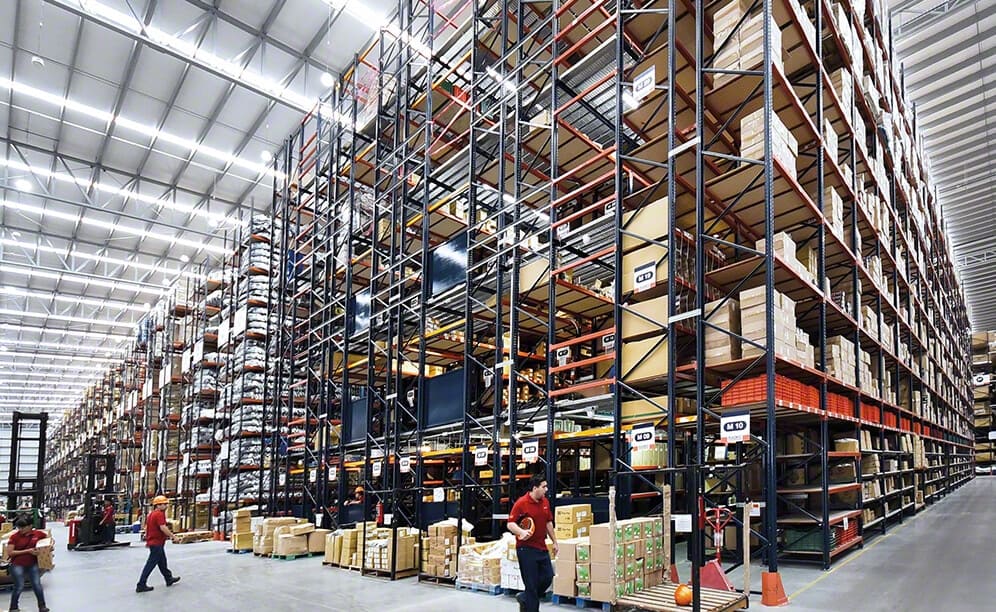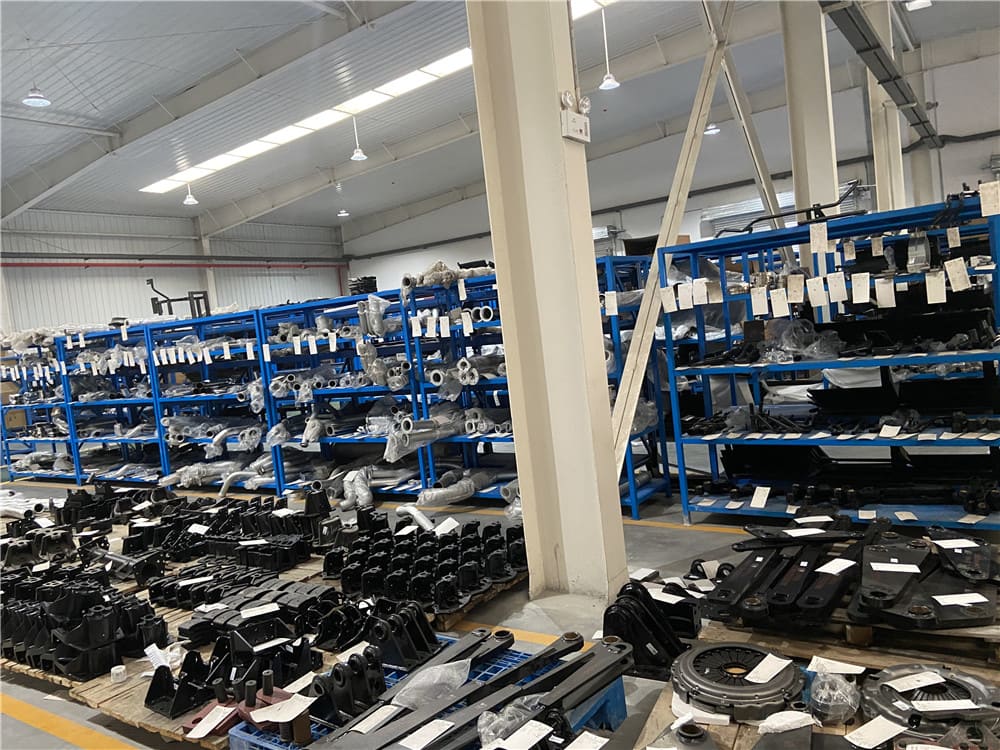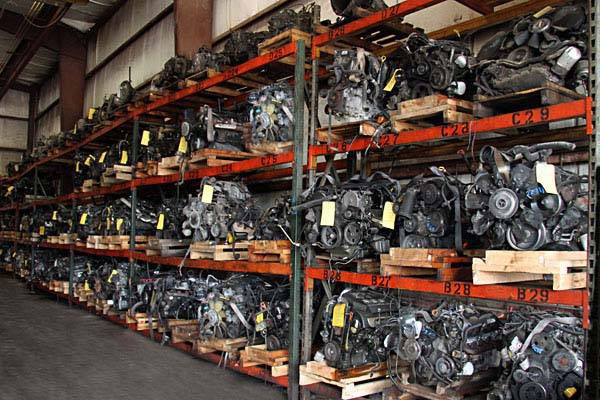Call Us :8615298359310
Call Us :8615298359310
In the automotive industry, tons of SKUs are stacked in the auto parts warehouse. At the heart of this process lies the auto parts warehouse, a specialized facility designed to store, manage, and distribute a vast array of vehicle components.
These auto part warehouses serve as critical links between manufacturers, suppliers, and end-users, ensuring that the right parts are available at the right time. This article analyses the key factors to consider when building an auto parts warehouse, exploring the intricacies of this essential component in the automotive ecosystem.

Key Factors in Building an Auto Parts Warehouse
When establishing an auto parts warehouse, several critical factors must be carefully considered to ensure optimal performance and longevity.
Location and Accessibility
The strategic placement of an auto parts warehouse significantly impacts its operational efficiency. Ideal locations offer:
Proximity to major transportation hubs
Sufficient space for future expansion
Compliance with local zoning regulations
A well-chosen location minimizes transportation costs and delivery times, enhancing overall supply chain performance.
Warehouse Layout and Design
The internal configuration of an auto parts warehouse plays a pivotal role in its functionality. An effective layout facilitates:
Smooth product flow
Efficient order picking and packing
Maximized storage capacity
Safe and ergonomic working conditions
Warehouse designers must consider the diverse range of auto parts, from small fasteners to large body panels, when planning the space. The layout should accommodate various storage solutions and allow for easy movement of both personnel and equipment.
This versatile system offers direct access to all pallets, making it ideal for warehouses with a wide variety of SKUs. In an auto parts context, selective pallet racking suits:
Medium-sized components like alternators, starters, or water pumps
Boxed items such as filters, spark plugs, or brake pads
The flexibility of selective pallet racking allows for easy reconfiguration as inventory needs change.
These high-density storage systems maximize space utilization for homogeneous products. They work well for:
Bulk storage of fast-moving items like oil filters or wiper blades
Seasonal items such as winter tires or air conditioning components
Drive-in racking operates on a last-in-first-out (LIFO) basis, while drive-through allows first-in-first-out (FIFO) inventory management, crucial for items with expiration dates.
Cantilever racks excel at storing long or irregularly shaped items. In auto parts warehouses, they're perfect for:
Exhaust systems
Driveshafts
Body panels
Windshields
The absence of front columns in cantilever racking allows for easy loading and unloading of these awkward items.
Mezzanines floor system utilize vertical space for small parts storage. They're ideal for:
Fasteners like bolts, nuts, and washers
Electrical components such as fuses and relays
Small engine parts like gaskets and seals
Mezzanine floors effectively double the storage capacity of floor space, maximizing warehouse cube utilization.
For high-volume auto parts warehouses, AS/RS offers unparalleled efficiency. These systems excel at:
Rapid retrieval of small to medium-sized parts
Maximizing vertical storage space
Reducing picking errors
An AS/RS might store and retrieve thousands of small parts like sensors, switches, or electronic control units, significantly speeding up order fulfillment processes.
The integration of these racking solutions with advanced inventory management techniques creates a synergistic effect. For instance, ABC analysis might dictate that fast-moving A-items be stored in easily accessible selective pallet racking near packing areas. Meanwhile, slow-moving C-items could occupy high-density drive-in racks or upper levels of AS/RS systems.
Moreover, the warehouse management system (WMS) can optimize picking routes based on the racking layout and inventory classification. This integration ensures that workers take the most efficient paths when fulfilling orders, reducing travel time and increasing productivity.

Effective inventory management forms the cornerstone of a successful auto parts warehouse. It ensures accurate stock levels, reduces carrying costs, improves order fulfillment rates, and minimizes obsolescence.
Advanced inventory management methods prove invaluable in enhancing warehouse efficiency. The ABC analysis method, for instance, categorizes items based on their importance and value. In an auto parts context:
A-items: High-value, fast-moving parts like brake pads or oil filters
B-items: Moderate-value components such as alternators or radiators
C-items: Low-value, slow-moving items like specialty nuts or gaskets
This classification allows warehouse managers to prioritize storage locations and picking strategies, dedicating prime spaces to A-items for quick retrieval.
Just-in-Time (JIT) principles also play a important role in auto parts warehousing. This approach minimizes inventory holding while ensuring parts availability when needed. For example, a warehouse might maintain minimal stock of large, expensive items like engines or transmissions, ordering them only when customer demand arises. This strategy reduces storage costs and the risk of obsolescence for these high-value components.
Cycle counting represents another vital inventory management technique. Instead of annual full inventory counts, cycle counting involves regularly auditing a small portion of inventory. For instance, A-items might be counted monthly, B-items quarterly, and C-items annually. This method helps identify discrepancies early, maintaining accurate stock levels without disrupting daily operations.

Modern auto parts warehouses leverage technology to streamline operations and boost productivity. Key technological integrations include:
Warehouse Management Systems (WMS)
Radio Frequency Identification (RFID) tracking
Automated Guided Vehicles (AGVs)
Robotics for picking and packing
These technologies facilitate real-time inventory tracking, optimize picking routes, and reduce human error.
Prioritizing safety is paramount in auto parts warehouses due to the presence of heavy machinery, high shelving, and potential hazardous materials. Essential safety measures encompass:
Regular equipment maintenance and inspections
Comprehensive employee training programs
Clear aisle markings and safety signage
Personal protective equipment (PPE) requirements
Implementing a robust safety culture not only protects employees but also enhances operational efficiency by reducing accidents and downtime.

Auto parts warehouses must maintain specific environmental conditions to preserve product integrity. Key considerations include:
Temperature and humidity control
Dust and contaminant mitigation
Proper ventilation systems
Additionally, sustainability initiatives are becoming increasingly important in warehouse design and operation. Energy-efficient lighting, solar panels, and water conservation measures can reduce operational costs and environmental impact.
The success of an auto parts warehouse hinges on its workforce. Effective staffing strategies involve:
Hiring skilled personnel with automotive knowledge
Providing ongoing training on new technologies and processes
Implementing performance metrics and incentives
Fostering a culture of continuous improvement
Well-trained staff contribute to increased productivity, reduced errors, and improved customer service.
When building an auto parts warehouse, it's inevitable to evaluate your target growth in next five years. Considerations for scalability include:
Modular racking systems that can be easily reconfigured
Flexible warehouse management software
Adaptable automation solutions
Space allocation for potential expansion
From strategic location selection to advanced technology integration, each element has its own contribution in creating a high-performing storage facility.
As the automotive industry has emerged multiple trends such as electric vehicles and advanced driver assistance systems, auto parts warehouses must remain agile and adaptable. Regular assessments and upgrades will ensure that these facilities still serve as best practices in the automotive supply chain, supporting the business's success.
If you have any problems concerning the auto parts warehouse, don’t hesitate to contact us now, our team of experts will advise on the best fit for your warehouse.
Copyright © 2024 Jiangsu VISON Logistics Technology Co., Ltd. All Rights Reserved.  Network Supported
Network Supported
Sitemap | Blog | Xml | Privacy Policy